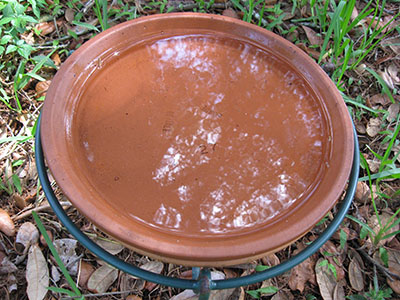Bird Feeding Tips

It’s that time of year when we hear the returning sounds of some of our favorite birds, like the buzzy trill of Northern Parulas, the whee-eep call of Great Crested Flycatcher or the chee-dits of Ruby-throated Hummingbirds. Spring is a good time to get our feeders ready for our nesting species as well as migrating birds. Be sure to routinely clean your feeders and bird baths to reduce exposure to disease. Always offer fresh water, particularly as our temperatures begin to rise. A bird bath can be as simple as using a clay saucer on a plant stand.
Offering a range of foods will increase your chances of attracting a greater variety of species. Here are some suggestions:
- Birdseed: Black oil sunflower seed is the most popular and a favorite for many of our resident species. Nyjer or a Finch Blend is also a good choice for migrating American Goldfinch.
- Nuts: Peanuts (roasted, unsalted is a good choice)
- Mealworms: Live mealworms are popular with numerous feeder birds and especially Eastern Bluebirds. Offer these in a container with smooth sides where they can’t crawl out. ‘Giant’ mealworms are not recommended because the larger exoskeleton is not readily digested.
- Fruit: This time of year wild fruits and berries are minimal so offering orange halves and plain grape jelly in a container will be attractive to fruit specialists, such as Baltimore Oriole.
- Nectar: For our Ruby-throated Hummingbirds, make a solution of one part white sugar to four parts water. Never use artificial sweeteners or honey. It is not necessary to add red food coloring. Boil briefly to dissolve sugar crystals and sterilize. Black spots inside the feeder are mold which can be detrimental to a hummingbird. Wash the feeder every few days with hot water to prevent mold growth.
- Suet: Because of our warm climate, we recommend a no-melt suet. Buy commercially prepared or try making your own!
For more bird feeding tips, check out these suggestions from Audubon. Bird feeding tips.
To download a brochure on bird feeding basics from Audubon, click here.
